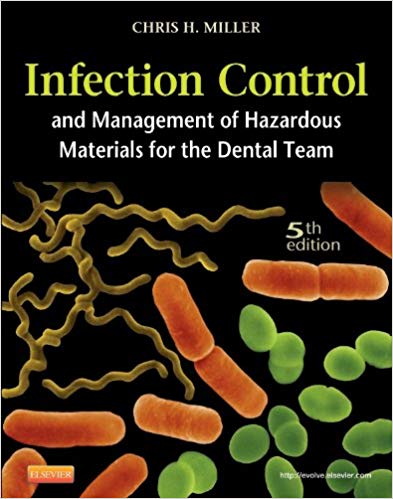Description
Infection Control and Management of Hazardous Materials for the Dental Team 5th Edition – Test Bank
Chapter 3: Development of Infectious Diseases
Test Bank
MULTIPLE CHOICE
1. Microbes that are usually harmless but can cause disease under certain conditions are called _____ pathogens.
|
A. |
opportunistic |
|
B. |
toxigenic |
|
C. |
endogenous |
|
D. |
exogenous |
ANS: A
|
Feedback |
|
|
A |
These agents cause diseases only when given a special opportunity to enter deeper tissues of the body or to accumulate to levels that can harm the body. |
|
B |
These diseases are caused by toxins released by a bacterium or fungus. |
|
C |
These diseases are caused by microbes that already exist within the body. |
|
D |
These diseases are caused by microbes that enter the body from the outside. |
REF: CHAPTER INTRODUCTION, page 19 OBJ: 4
2. Microbes that cause disease by producing a toxin are called _____ pathogens.
|
A. |
opportunistic |
|
B. |
toxigenic |
|
C. |
endogenous |
|
D. |
exogenous |
ANS: B
|
Feedback |
|
|
A |
These pathogens cause diseases only when given a special opportunity to enter deeper tissues of the body or to accumulate to levels that can harm the body. |
|
B |
These pathogens are caused by toxins released by a bacterium or fungus. |
|
C |
These pathogens are caused by microbes that already exist within the body. |
|
D |
These pathogens are caused by microbes that enter the body from the outside. |
REF: CHAPTER INTRODUCTION, page 19 OBJ: 5
3. Members of the normal body microbiota that can cause disease are called:
|
A. |
obligate intracellular parasites. |
|
B. |
toxigenic pathogens. |
|
C. |
endogenous pathogens. |
|
D. |
exogenous pathogens. |
ANS: C
|
Feedback |
|
|
A |
These agents (e.g., all viruses and some special bacteria) cause diseases by invading body cells. |
|
B |
These pathogens are caused by toxins released by the bacterium or fungus. |
|
C |
These pathogens are caused by microbes that already exist within the body. |
|
D |
These pathogens are caused by microbes that enter the body. |
REF: CHAPTER INTRODUCTION, page 19 OBJ: 4
4. The difference between an infection and an infectious disease is that an:
|
A. |
infection never causes an infectious disease. |
|
B. |
infection comes after the infectious disease has already started. |
|
C. |
infectious disease is an infection that causes damage to the body. |
|
D. |
infectious disease and an infection can never involve the same microbe. |
ANS: C
|
Feedback |
|
|
A |
Some infections can lead to disease. |
|
B |
An infection comes first. |
|
C |
An infection does not always indicate disease, but disease (damage to the body) seldom results without infection (the exception is toxigenic diseases). |
|
D |
This is not true. |
REF: Damage to the Body, page 21 OBJ: 1
5. That period of an infectious disease between the initial infection and the time when the first symptoms occur is called the _____ stage.
|
A. |
convalescent |
|
B. |
acute |
|
C. |
prodromal |
|
D. |
incubation |
ANS: D
|
Feedback |
|
|
A |
This is the recovery phase. |
|
B |
This is when the symptoms are at or near maximum levels. |
|
C |
This is the early symptoms stage. |
|
D |
The incubation stage is the time between infection and appearance of signs/symptoms. |
REF: Incubation Stage, page 20 OBJ: 2
6. That period of an infectious disease when the symptoms are at or near the maximum level is called the _____ stage.
|
A. |
convalescent |
|
B. |
acute |
|
C. |
prodromal |
|
D. |
incubation |
ANS: B
|
Feedback |
|
|
A |
This is the recovery phase. |
|
B |
This is when the symptoms are at or near maximum levels. |
|
C |
This is the early symptoms stage. |
|
D |
The incubation stage is the time between infection and appearance of signs/symptoms. |
REF: Acute Stage, page 20 OBJ: 2
7. That period of an infectious disease when the symptoms are declining is called the _____ stage.
|
A. |
convalescent |
|
B. |
acute |
|
C. |
prodromal |
|
D. |
incubation |
ANS: A
|
Feedback |
|
|
A |
This is the recovery phase. |
|
B |
This is when the symptoms are at or near maximum levels. |
|
C |
This is the early symptoms stage. |
|
D |
The incubation stage is the time between infection and the appearance of signs/symptoms. |
REF: Convalescent Stage, page 20 OBJ: 2

Reviews
There are no reviews yet.